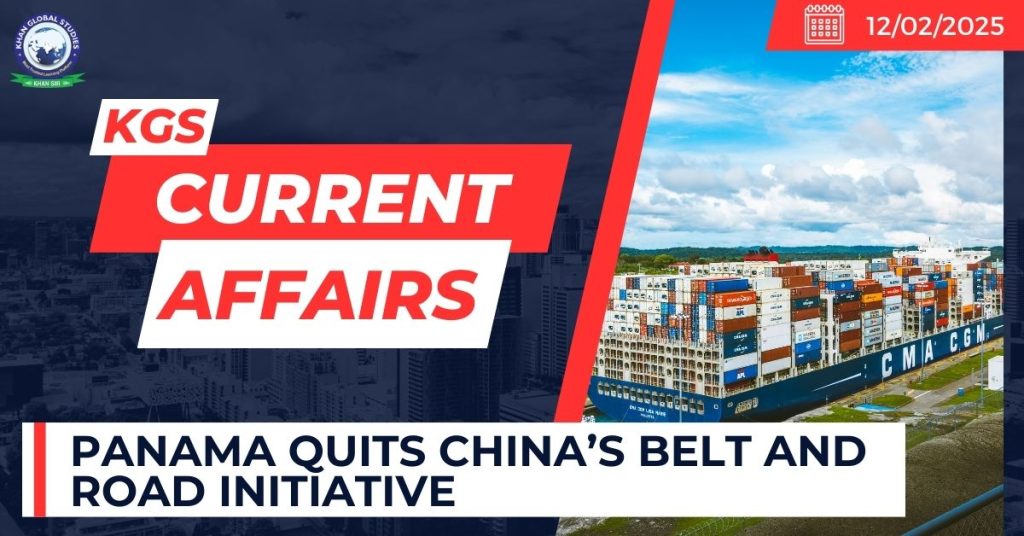Context:
Recently, Panama became the first Latin American Country to exit China’s Belt and Road Initiative.
More on the News

- The Panamanian President announced the BRI withdrawal following a meeting with U.S. Secretary of State Marco Rubio during Rubio’s first official visit as secretary.
- Panama’s membership in BRI and Chinese influence and operations in ports led the USA to question the neutrality of the Panama Canal and the nature of Panamanian ties to China.
- Currently, more than 20 Latin American nations are among the more than 150 countries that have participated in the BRI.
- Earlier in 2017, Panama became the first Latin American country to officially join China’s Belt and Road Initiative.
- Since 1997, the Panama Ports Company (PPC) has operated the Ports of Balboa and Cristobal located at the northern and southern ends of the Panama Canal, respectively. PPC is a member of the Hong Kong-based Hutchison Port Holdings (HPH).
History of Panama Canal
- The US was instrumental in building the canal between 1904 and 1914, and subsequently enjoyed the advantages of controlling it. Charging low rates from ships using the canal helped American producers and consumers grow, too.
- Under the 1977 Carter-Torrijos Treaty, the US retains the right to intervene if the canal’s neutrality is threatened by internal conflict or foreign power. Thus, its geopolitical interests were secured without having to directly control the canal. It was handed over to Panama in 1999.
Arguments by USA
- US officials’ concerns come amid a global scrutiny of Beijing’s efforts to build or secure access to commercial ports around the world – which could also benefit China’s expanding navy. When it comes to the Panama Canal, some observers say that Chinese firms’ involvement in the canal and its infrastructure could give Beijing leverage – both in terms of commercial advantage and in the event of a potential future conflict with the US.
- The strategic risk from a military perspective is that the more commercial assets that are linked to China around the canal, the more options Beijing has to block the US from moving military equipment through the waterway in the event of a conflict between them.
China’s Stance over Panama’s Withdrawal
- China summoned Panama’s Ambassador to China to lodge “solemn representations” over its decision not to renew the Memorandum of Understanding on the Belt and Road Initiative (BRI).
- China also opposes the United States as it is using pressure and coercion to undermine Belt and Road cooperation.
Geopolitical Repercussions and Shifts in Strategy
- Panama’s decision to leave the BRI marks a broader realignment in global politics.
- In 2023, Italy became the first European country to exit the initiative, citing limited economic benefits.
- Brazil, which had considered joining the BRI last year, ultimately decided against it, expressing concerns over long-term commitments to Beijing.
China’s Belt and Road Initiative
China proposed the Belt and Road Initiative (BRI) in 2013 to improve connectivity and cooperation on a transcontinental scale.

The project was originally named the ‘One Belt, One Road’ but in 2016 it was renamed as the BRI.
The project involves two main components, each underpinned by significant infrastructure investments:
- The Silk Road Economic Belt (the “Belt”)
- The New Maritime Silk Road (the “Road”)

